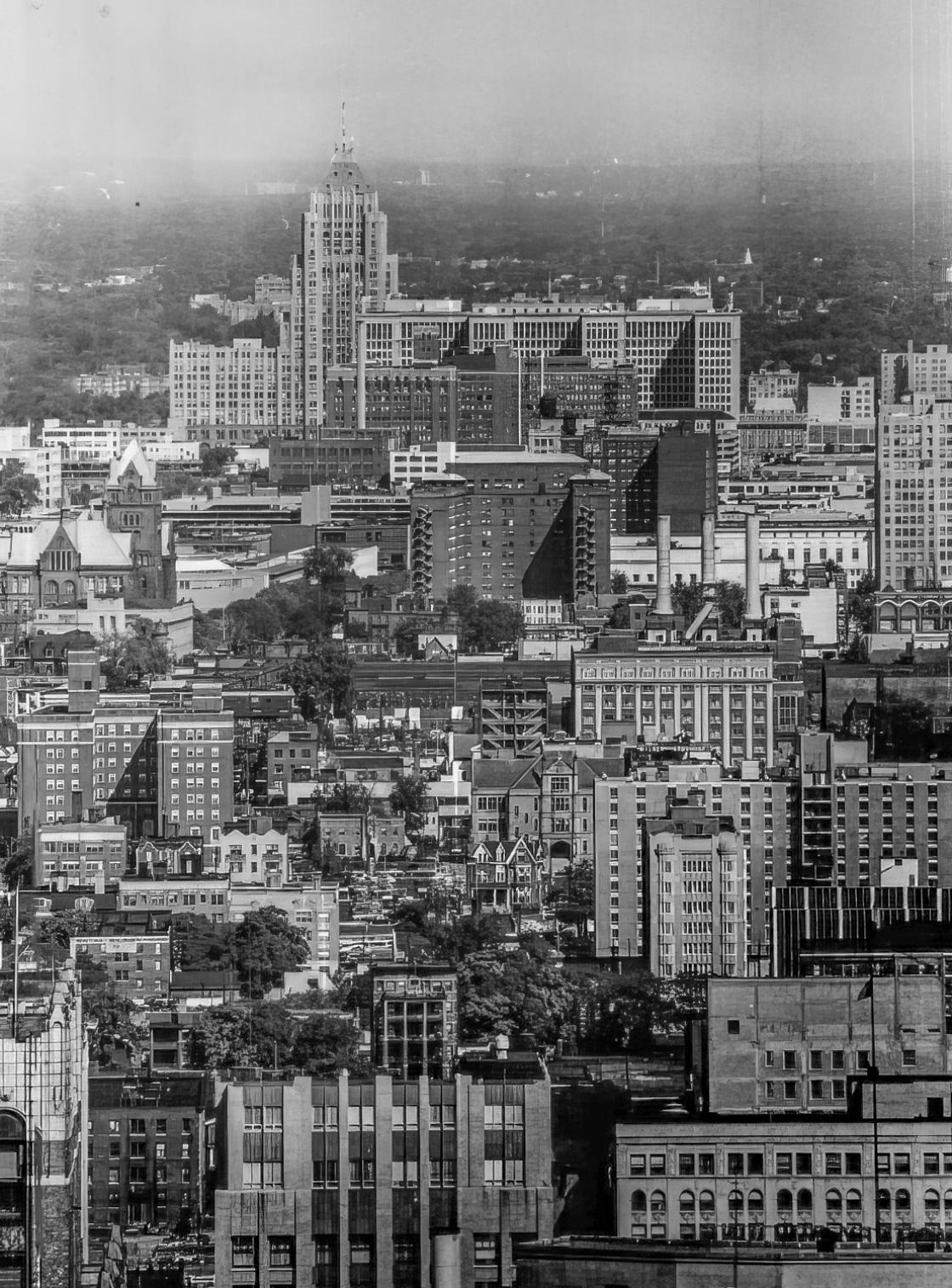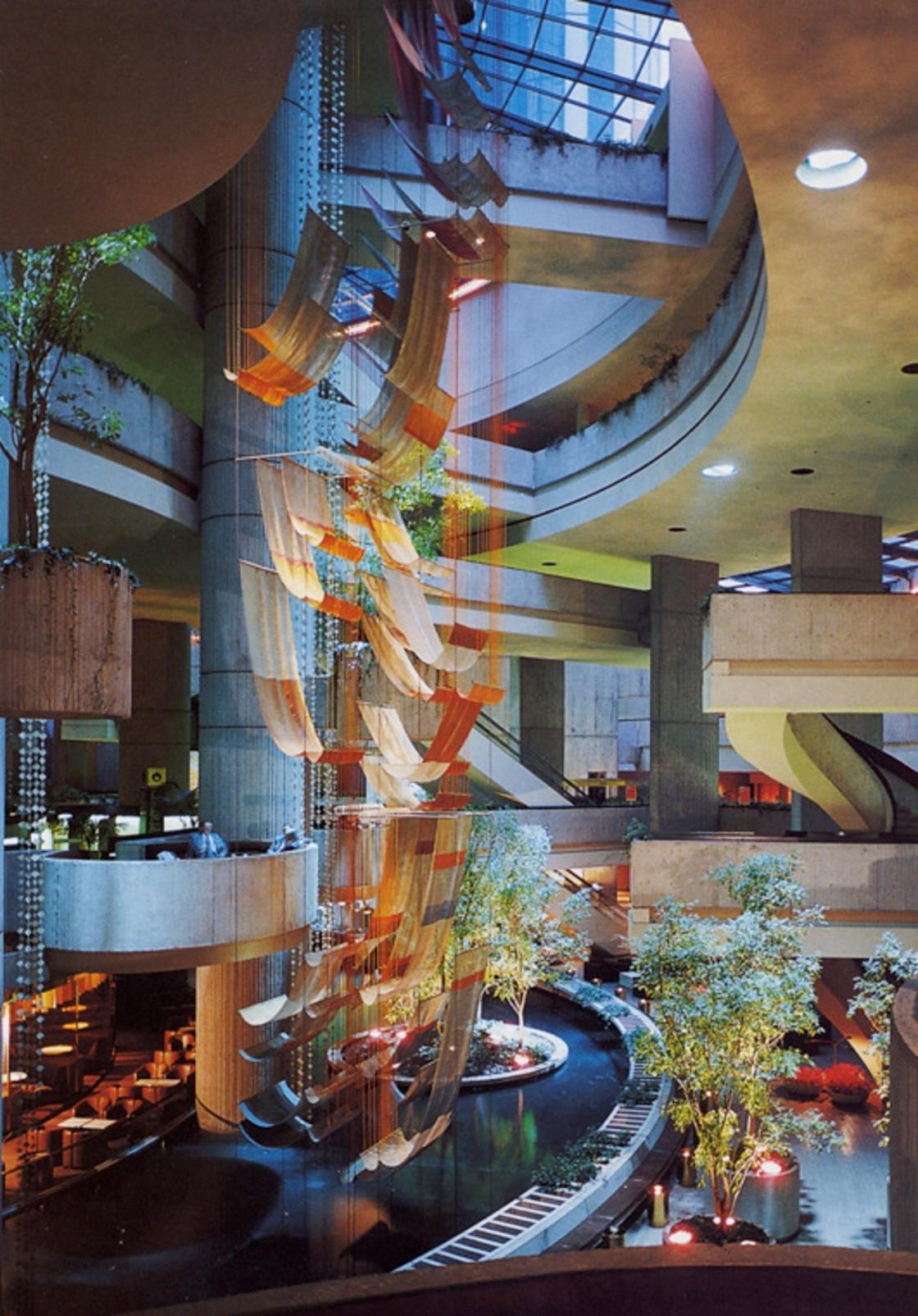lecture series
HISTORY OF AMERICAN ARCHITECTURE: DETROIT AND THE WORLD
Tuesdays, February 6 through March 5, 2024
Virtual | 12:00pm-1:15pm EST
Virtual and In-Person | 6:30pm-7:45pm EST
PRESENTED BY CRANBROOK CENTER FOR COLLECTIONS AND RESEARCH
Virtual via Zoom
In-Person at Cranbrook Art Museum de Salle Auditorium
Lecturer: Kevin Adkisson, Curator, Cranbrook Center for Collections and Research
$75 for Adults; $25 for Full-time Students with ID
Free for Cranbrook Students (register by emailing center@cranbrook.edu)
Advance Registration Required (fee includes all five lectures)
This lecture series is eligible for American Institute of Architects Continuing Education Credits (AIA/CES).

SPONSORED BY
Join Kevin Adkisson for the return of the Center’s popular History of American Architecture lecture series. The seventh annual installment will focus on the architecture of Detroit, studying the buildings, designers, and policymakers that shaped the city’s dramatic transformations from the late nineteenth century to today, and how Detroiters have influenced the course of architecture around the globe.
Each week will illuminate an aspect of Detroit’s unusually complex architectural fabric and the ways in which Detroiters have altered the history of architecture with a 75-minute, image-rich lecture that draws from the resources of Cranbrook Academy of Art Library and Cranbrook Archives. All levels of architecture knowledge are welcome to attend this series.

WEEKLY TOPICS
Firing on all Cylinders: The Creation of Modern Detroit
Architects include Paul Philippe Cret, Albert Kahn, Wirt Rowland, Smith, Hinchman & Grylls
The series begins with a study of Detroit’s most extraordinary moment of growth: the meteoric rise from a regional city of less than 300,000 residents in 1900 to a global center of automobile production populated by 1.6 million residents in 1930. While architect Albert Kahn’s pioneering factories transformed the contours of city and suburb, the wealth created in Detroit’s factories was invested in exuberant skyscrapers downtown. Like the cars rolling off factory assembly lines, the architectural innovations made in Detroit would spread around the world.
Importing Dreams: From French Colony to English Arts and Crafts
Architects include H. J. Maxwell Grylls, Albert Kahn, Eliel Saarinen, William Buck Stratton
The second lecture explores how immigrants and international art movements changed the buildings of Detroit. Exchange of ideas through organizations (including the Detroit Society of Arts and Crafts, Scarab Club, and Detroit Institute of Arts) enriched the artistic and architectural discourse of the city. In particular, the English Arts and Crafts movement flourished in Detroit, fueled by an urge to bring buildings that embodied an artisanal spirit of “truth and beauty” to the booming center of industrial mass production.
Cranbrook: The Cradle of Midcentury Modernism
Architects include Charles Eames, Florence Knoll, Gyo Obata, Ralph Rapson, Louis Redstone, Eero Saarinen, Harry Weese
From within their studios in suburban Bloomfield Hills, Cranbrook Academy of Art faculty and students tested new ideas in architecture. By World War II, the Academy had produced a formidable roster of architects and designers, including Eero Saarinen, Florence Knoll, Gyo Obata, Charles and Ray Eames, Harry Weese, Ralph Rapson, Ruth Adler Schnee, and countless others. Setting up practices across the country following their time at Cranbrook, these designers defined modern American architecture at midcentury.
From City Beautiful to Urban Renewal: Architecture and Civic Identity
Architects include Victor Gruen, Nathan Johnson, William Kessler, John Portman, Mies van der Rohe, Minoru Yamasaki
As Detroit’s economy sputtered in the second half of the century, the city’s tight urban plan of radial avenues and gridded neighborhoods gave way to government-cleared superblocks and highways. Urban renewal schemes erased historic buildings and displaced residents in order to develop massive new housing projects, commercial developments, healthcare complexes, and shopping malls. Internationally-renowned architects and planners were brought in to transform the metro area, with major economic and demographic consequences.
Continuity, Reuse, and Reinvention
Architects include EC3/Edwin Chan, Philip Johnson, SHoP, Sims-Varner and Associates, SmithGroup, T+E+A+M, Undecorated/Ishtiaq Rafiuddin
Since filing for bankruptcy in 2013, Detroit has experienced a remarkable renewal, especially in its downtown core—boldly marked by ongoing construction of the Hudson’s Site Building by New York’s SHoP Architects. The final lecture in the series investigates the Detroit of today, and the consequences of global brands, local investors, and challenging (and ever changing) economic and climate conditions on architecture.
ABOUT KEVIN ADKISSON
Curator Kevin Adkisson works on preservation, interpretation, and programming across the many buildings and treasures of Cranbrook. Since arriving as a Collections Fellow in 2016, Kevin has welcomed thousands of guests to Cranbrook’s National Historic Landmark campus, both in person and virtually. Through tours, lectures, and online programming, Kevin makes history come alive with a friendly, humorous nature, and deep passion for art and architecture. Kevin serves as the first curator of the Frank Lloyd Wright-designed Smith House, a 2017 gift to Cranbrook Center for Collections and Research from The Towbes Foundation and Anne Smith Towbes.
Raised in Marietta, Georgia, and introduced to architecture through the works of Frank Lloyd Wright, Kevin earned his BA in Architecture from Yale, where he worked for four years at the Yale University Art Gallery’s Furniture Study. Kevin received his MA from the University of Delaware’s Winterthur Program in American Material Culture, with a thesis examining the role of postmodernism in Jon Jerde’s shopping mall architecture.

Before coming to Cranbrook, Kevin worked for Robert A.M. Stern Architects (RAMSA) in New York as a research and writing associate. At RAMSA, he assisted design teams in researching historical reference imagery to be used in the design of the firm’s signature modern-traditionalist aesthetic. He also assisted in image research for Stern’s books, Paradise Planned: The Garden Suburb and the Modern City (2013) and Pedagogy and Place: 100 Years of Architecture Education at Yale (2016). Kevin Adkisson also worked at Kent Bloomer Studio in New Haven, Connecticut, on the design and fabrication of architectural ornament.
ADDITIONAL INFORMATION
The History of American Architecture Lecture Series is presented by Cranbrook Center for Collections and Research. The fee includes admission to all five lectures. Although the lectures build on each other, attendance at all five lectures is not required. Regretfully, discounted tickets cannot be sold to individual lectures and admission cannot be transferred to other people.
The lectures will begin promptly at their scheduled times and will be followed by a ten-minute Q&A session. The morning and evening lecture will be the same. A supplemental reading list will be provided after the lecture series; there are no written assignments or evaluations.
In-person attendees may choose to attend the lectures virtually. Unfortunately, due to space limitations, virtual ticket holders may not attend in-person lectures.
This lecture series is eligible for American Institute of Architects Continuing Education credits (AIA/CES). The lecture series is only eligible for Elective credits (not Health, Safety, and Welfare units). Each lecture is one Learning Unit (LUs), for a total of five LUs for Elective credits. AIA members must log into aia.org to self-report their education. Paper forms are not accepted or used by AIA CES. Please call your local AIA chapter for more information.
INFORMATION FOR VIRTUAL ATTENDEES
On the Friday prior to the lecture date, registered participants will receive an email with instructions on how to join this virtual experience; a reminder will be sent one hour prior to the start of the lecture. We are limited in the number of virtual “seats” and each registration is unique. Please do not share the login link with others. We appreciate your support of the Center by purchasing tickets for each viewer in your household.

INFORMATION FOR IN-PERSON ATTENDEES
Cranbrook Art Museum is accessed through Cranbrook’s main entrance at 39221 Woodward Avenue. Free parking is available on the east side of the Art Museum and in the parking deck located midway between Cranbrook Art Museum and Cranbrook Institute of Science. Access to deSalle Auditorium will be through Cranbrook Academy Library, on the west side of the Art Museum Peristyle. Attendees that would like access to the Art Museum’s barrier-free entrance (through the New Studios Buildings) will need to make advance arrangements with the Center the week before each lecture by emailing center@cranbrook.edu.
SNOWDAY PLAN
In case of snow or inclement weather, the in-person lecture will be held live online via Zoom. If the in-person option needs to be cancelled, registered attendees will be sent an email by 3:00pm on the day of the lecture. If Cranbrook Schools are closed for the day, or close early, the evening in-person option also will be cancelled and attendees will be sent a link to attend the virtual lecture.
For additional information in advance of the lecture, please email center@cranbrook.edu or call the Center at 248.645.3307.

PHOTO CREDITS
Banner Image: One Woodward (Michigan Consolidated Gas Company Building) by Minoru Yamasaki, Detroit, Michigan, 1963; Photography by sbmeaper1 on Flickr, CC0 1.0 Universal, 2016.
New Center Detroit and the Fisher Building (Albert Kahn, 1928); Photograph from the Detroit Free Press Archives, 1977, Retrieved from HistoricDetroit.org.
Collage for a Concert Hall project by Ludwig Mies van der Rohe (1942), with cut-and-pasted papers and gouache atop a photograph of Glenn Martin Aeroplane Factory by Albert Kahn, Inc. (Baltimore, Maryland, 1939); Museum of Modern Art © 2023 Artists Rights Society (ARS), New York / VG Bild-Kunst, Bonn.
Maccabees Building by Albert Kahn, Detroit, Michigan, 1927; Photography by Helmut Ziewers (www.ziewersphotography.com) of HistoricDetroit.org.
Frederick K. Stearns House by Stratton & Baldwin, Detroit, Michigan, 1902; Photography by Joseph Tiano for HOUR Detroit Magazine, 2022.
General Motors Technical Center, Styling Building. Eero Saarinen and Associates, Warren, Michigan, 1948-1956; Photography by James Haefner, Courtesy James Haefner.
Lafayette Park by Ludwig Mies van der Rohe, Detroit, Michigan, 1956–1963; Photography by James Haefner, Courtesy James Haefner.
Caterpillar Building by Undecorated/Ishtiaq Rafiuddin, Detroit, Michigan, 2021; Photography by Jason Keen, retrieved from https://undecorated.us/.
Kevin Adkisson, September 2021; Photography by Katie Severson, CAA 2D Design 2022, Courtesy Cranbrook Center for Collections and Research.
“History of American Architecture: Detroit and the World” by Luis Quintanilla, MFA, 2D Design, Cranbrook Academy of Art, 2024. © Luis Quintanilla | Cranbrook Center for Collections and Research.
Renaissance Center by John Portman, Detroit, Michigan, 1976 with Free Fall fiber sculpture by Gerhardt Knodel, 1977; Photography by Alexandre Georges, 1977, Courtesy of Gerhardt Knodel.

